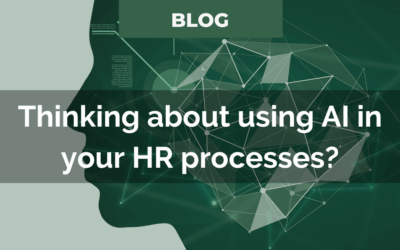We have recently seen the last of the changes from the Conservative Government, the publication of the Employment Rights Bill 2024 which details the Labour Government’s plan for employment law and of course… the Budget. All of which have sparked discussions with our client across the UK businesses about how best to manage the changes, with a common theme being redundancies.
While all of the changes, both actual and proposed, present new challenges for employers, it’s crucial to approach decisions with careful consideration rather than reactive measures. A knee-jerk reaction, especially in relation to redundancies, could in some cases cause additional issues and headaches.
Understanding the Key Changes
There have been many changes this year (April, Fire and Rehire, Tips, Sexual Harassment, Family Friendly, Flexible Working, Carer’s Leave) and Employment Rights Bill 2024 plans to introduce several significant modifications to worker protections, including:
- Enhanced flexible working rights from day one of employment;
- Stronger protections for pregnant women and new parents;
- New regulations around zero-hours contracts;
- And many, many more!
However, it is important to note three things:
- This is a Bill, which means it is not yet law or legally binding;
- There are lots of areas of the Bill that are subject to consultation; and
- The Government plans to introduce the changes over the next 1000 days.
We are expecting a second Bill which will deal with more complex areas of employment law for example the rule relating to IR35.
The Budget
The much anticipated, and feared budget gave employers more burdens to bear. We don’t deny that the Budget has had a huge impact on businesses. We have received calls to discuss the reduction of headcount, the need to see greater return from each employee. We have also seen an increase in the queries over the benefits of apprentices given their significant, 18% increase in pay.
But as with adapting to changes in law, business owners would be wise to consider how they react to the budget carefully. An honest and open discussion with a reliable accountant should be your first point of call.
Karen Lewis from Key Accountancy Services says that “a frank and open discussion about the state of your business will tell you what you need to do survive or how you can thrive. With a clear look at the finances and how your business is affected by the Budget will you then be able to assess what steps to take and what advice to seek”.
Why Knee-Jerk Redundancies Are Risky
Making immediate decisions without seeking advice from experts, whether it be HR and employment law, accountancy or payroll before you make decisions can have a wide range of impacts, good and bad, especially when it comes to redudancies.
- Hidden Costs of Redundancy
- Potential legal challenges if processes aren’t followed correctly
- Loss of knowledge and expertise within your business
- Impact on team morale and productivity
- Future recruitment and training costs when you decide to recruit or costs of automation
- In addition to redundancy payments, notice and accrued untaken leave is also due.
- Loss of Competitive Advantage
- Reduced capacity to meet customer demand
- Risk of losing market share to competitors
- Damage to company reputation
- Decreased innovation and adaptability
Alternative Approaches to Consider
Before contemplating redundancies, there are more strategic considerations, for example:
- Process Optimization
- Review and streamline workflows
- Invest in automation where appropriate
- Identify and eliminate inefficiencies
- Consider Working Arrangements
- Implement different working models
- Consider flexible hours to maximize productivity
- Review shift patterns and working schedules
- Skills Development
- Upskill existing workforce for greater versatility
- Cross-train employees across different departments
- Invest in technology training
- Cost Management Strategies
- Review supplier contracts
- Review and optimise your cashflow
- Reduce non-essential expenditure
- Consider premises costs and alternative arrangements
The Role of Professional Advice
Before making any significant changes seek advice.
Conclusion
By taking a measured, strategic approach and considering alternatives, you can adapt to the new landscape while maintaining your workforce integrity and business capabilities.
Remember that your employees are your most valuable asset (even though sometimes they might cause you a headache or two). The costs of making redundancies often outweigh the short-term savings, and rebuilding capacity later can prove more expensive than finding creative solutions to retain your talented workforce now.
The key is to view these changes not as insurmountable obstacles but as catalysts for positive organisational transformation that can lead to increased efficiency and resilience in the long term.
Employment Law Solutions don’t just offer basic HR advice, the lawyers help clients navigate the ever-changing field of HR and understand the ever-evolving world of employment law. By offering a monthly retainer service you are able to benefit from unlimited legal advice and employment contract reviews 24/7, 365 days, all while spreading the cost over 12 monthly payments. Contact us to see how Employment Law Solutions can help you and your business.




